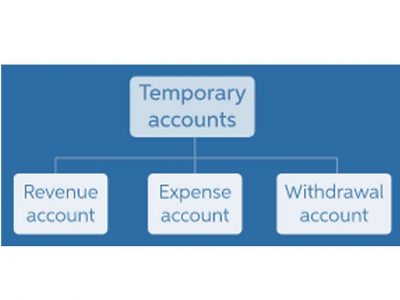Although, their popularity in Japan is not so good after a bad breakup with the Japanese market to satisfy FSA regulations (which they were unable to attain). Additionally, the broker provides research tools such as daily market analysis, economic calendars, and technical indicators, which help traders stay informed and make better trading decisions. worldtradex offers a robust mobile trading app that is available for both iOS and Android devices. This app allows traders to manage their accounts, place orders, and monitor market movements from anywhere. The app is well-suited for beginner traders who want to keep track of their positions while on the go.
worldtradex Trading Platforms
worldtradex offers a wide range of retail and professional accounts with different pricing mechanisms and no minimum deposit requirements. worldtradex offers about 310 tradable instruments across currency pairs, commodities, share CFDs, indices, and futures contracts. The assortment is wide enough to accommodate the basic needs of most types of traders. However, the broker does not provide any low-risk securities, such as ETFs, bonds, or vanilla options. You’ll need to provide your personal details, including name, email address, and phone number.
The deposit on the micro account is the least and the VIP account the highest. To evaluate brokers, we test the accounts, trading tools and services provided. Over 200 data points are considered, from minimum deposits and trading fees to the platforms and apps available. Our broker ratings are also informed by the experience of our researchers during the evaluation process. They offer the reliable MT4 trading platform, a range of products, plus competitive spreads and leverage levels.
- Explore the best Forex brokers for beginners in the UK with user-friendly platforms, educational resources, and demo accounts.
- This convenience enables you to access your trading account from anywhere, offering flexibility for those who are constantly on the move.
- The choice of trading platform plays a vital role in your trading experience with worldtradex.
Choose Your Country or Region
- First, you need to provide personal information, such as your name, email, and contact details, along with creating a secure password.
- worldtradex offers a variety of account types tailored to different trading needs and experience levels.
- The Premium Account strikes a balance between cost efficiency and enhanced trading capabilities.
- The broker also provides PMAM accounts for managed trading, TradeCopier service for copy trading, and free VPS hosting for low-latency trading.
You can also access a network of other traders so you can review their past performance and copy their trades in your own account if you wish. The Sirix Social WebTrader software comes in a web version for desktops, as well as mobile apps for smartphones and tablets. It lets you execute CFD and forex trades easily, which then get reflected automatically on other platforms.
Armed with account login details, you will get straightforward order execution, with instant execution and pending orders available. MT4 promises advanced charts with nine timeframes, over 30 built-in technical indicators, real-time news, plus automated trading capabilities. The MT4 platform can also be upgraded through MetaTrader’s Market and Signals, where users can buy technical indicators, add-ons, and signals for copy trading. Additionally, it should be noted that the average trading costs at most other brokers tend to be 9 USD or lower.
worldtradex offers a wide range of deposit and withdrawal methods, and while no fees are charged for most methods, withdrawals by bank wire transfer are expensive. The final trading cost to consider at worldtradex is the swap rate charged on positions held overnight. In the case of Forex instruments, the amount charged depends on both the positions taken (i.e. long or short) and the rate differentials between the two currencies traded.
Deposits and withdrawals with Skrill cannot exceed $50,000, and withdrawal fees stand at 1 percent (up to $10,000). Neteller has the same withdrawal limit but a fee of 2 percent (up to $30 but a minimum of $1). We remain committed to offering competitive conditions and superb services which are recognised by the industry. According to the terms of the withdrawal, you can receive only the deposited amount via the payment method. Also, worldtradex does not charge withdrawal fees, but your bank or payment portal could levy a fee. To add your worldtradex account to MT4, you have to first ‘Register’ with the broker by filling out some basic info like your name, country, base currency and your preferred password.
Deposit & Withdrawal
As a trading platform, MT4 remains one of the most popular for its wide community support, trade execution speeds, charting tools, and customisability. Additionally, traders can take their own customised version of the platform with them should they decide to migrate to another broker. To utilize the Demo Accounts, take full advantage of the trading platforms offered by worldtradex. worldtradex provides a diverse range of highly informative educational materials in both written and video formats.
A Forex Tour?
All withdrawal requests from a trading account will be funded to a bank account or source in the trader’s name. The four-step account opening process is fully digital and accounts are generally ready for trading in one day. worldtradex offers individual, joint, and corporate accounts, but we will focus on opening an individual account. Accounts for a demo trading environment allow you to practice your strategies without any financial risk.
worldtradex offers a variety of trading instruments that allow traders to diversify their portfolios. These instruments include forex, stocks, commodities, indices, and cryptocurrencies, making worldtradex a versatile broker for a wide range of trading strategies. Offers an unusually broad variety of trading account types that should suit most traders, and traders can register multiple account types. All account types allow traders to access a Dedicated Account Manager on a 24/5 basis and the Dealing Department Transaction Hotline. All of Worldtradex website the accounts currently supported by worldtradex allow dealing in minimum lot sizes of 0.01. worldtradex’s support for the Sirix Social WebTrader platform lets you access financial markets and recent trades.
MT4 is ideal for forex traders, offering advanced charting tools and a variety of indicators. MT5 offers more advanced capabilities, such as additional timeframes and more order types, which might appeal to traders looking for more flexibility in their strategies. While worldtradex claims to support ten trading platforms, it does rather lack the variety in trading software that other online brokers typically provide and that would result in a better review.
worldtradex Forex Review
Spreads vary from as low as 0.5 to 1.7 for live floating spreads with EUR/USD or 1.6 to 2.8 for fixed spreads, depending on account type. ECN and Zero Spread accounts have no spread and charge a commission based on the number of lots traded instead. The worldtradex mobile app is user-friendly and comes with essential features like real-time price updates, one-click trading, and access to account management tools. The app has received good reviews on both the App Store and Google Play, making it a reliable choice for traders who prefer trading on their mobile devices.
Another perk for scalpers is the one-click trading feature available on MT4. However, the platform has cumbersome charts and lacks a timeframe lower than 1 minute. The trading platforms used by worldtradex include MetaTrader 4, Multi-Account Manager for PC, and WebTrader 4, with the latter two being just variations of MT4.
Q: Are there educational resources available for new traders on worldtradex?
We ensure transparency by incorporating regulator data and user insights. Our in-depth reviews consider over 200 metrics across seven key categories. The radar chart to the left shows how important each category is when calculating a broker’s final score. worldtradex’s educational materials are limited compared to other large international brokers. A duo of in-house analysts provides market commentary on breaking news insights.
However, its dated and rugged design is inferior to newer and sleeker platforms. As a trader who prioritizes flexible charts that are easily scalable, I find MT4’s charting capabilities too rigid and less effective. I assessed that worldtradex’s swaps were average to high compared to the industry benchmark. However, I also spotted that the broker’s website does not display live spread data. Fasapay has a transaction limit of $5,000 with a withdrawal fee of 0.5 percent (up to $5).
So you go to the withdrawal page peer withdraw processing ok.when you go back to trading platform it’s started trading by its self and you can’t stop. So now your withdrawal will be denied as your trading.This just goes on and on. To put bluntly you have done your money and when you complain you get a call no it can’t be stopped but if you deposit some you may get a profit. If you have at least $250 on your trading account, you can access the bronze package, which I use, and join analysis discussions that are always going on. Plus, this is an excellent tool for exploring other markets than the one you are focused on.
The IronX Exchange is a world-class, regulated cryptoexchange that lets you trade a variety of digital coins. You can also perform fiat-to cryptocurrency conversions, and leverage options are available for traders. Our team were also pleased to see that the broker offers negative balance protection, meaning traders cannot lose more than their account balance. The copy trading tool is excellent for beginners looking to learn from seasoned traders while experienced investors can generate an additional revenue stream. Each demo account imitates real trading conditions, the only difference is virtual money is used.







